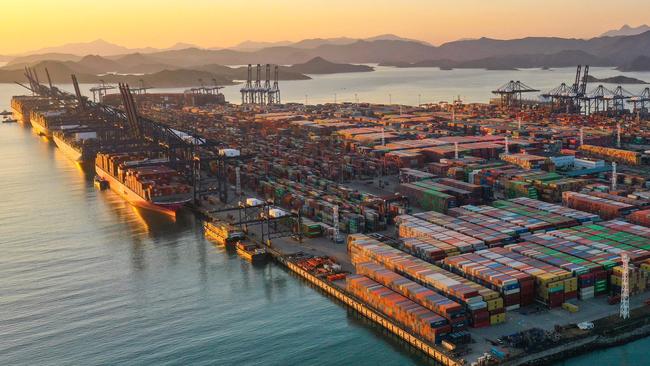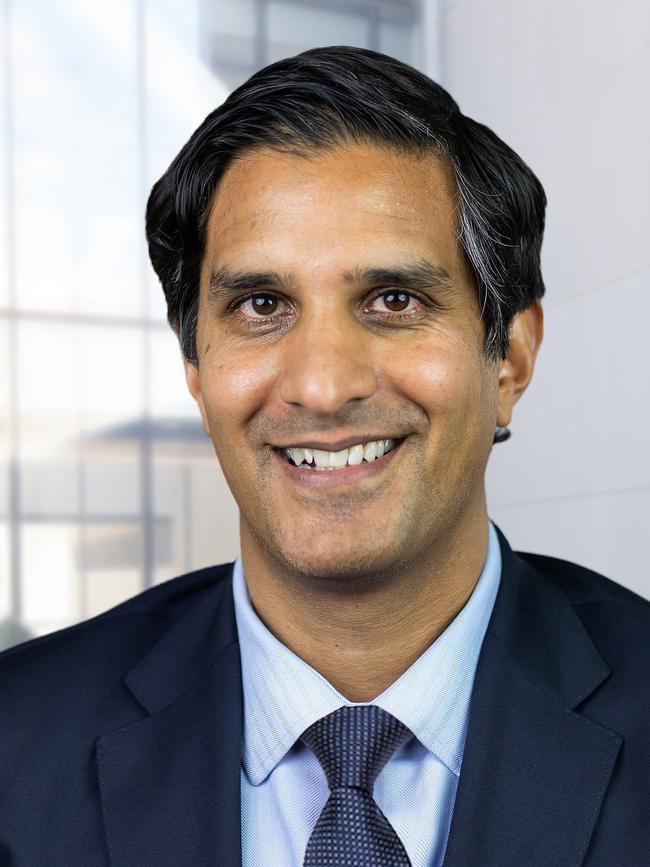Reopened China a ‘short-term’ salve to slowing economic growth, says Daleep Singh
Joe Biden’s former security adviser, Daleep Singh, sees China’s reopening as only a short-term offset to slowing economic growth in the developed world.

Joe Biden’s former security adviser, Daleep Singh, sees China’s reopening as only a short-term offset to slowing economic growth in the developed world, amid rapid interest rate hikes prompted by stubbornly high inflation.
When China finally started ending its dramatic zero-Covid policy in December, after months of doubling down, it took many investors by surprise. Some commodities such as iron ore were already surging. Other markets took longer to react. But the risk appetite generally improved, bolstering demand for a range of commodities as well as stockmarkets in China and overseas.
China is the world’s No.1 economy and biggest consumer of most commodities, but Mr Singh, chief economist and head of global macroeconomic research at PGIM Fixed Income, expects only a limited “reopening bounce” because it never really shut its industrial base.
Before starting at PGIM in June, he was President Biden’s deputy national security adviser for international economics and deputy director of the National Economic Council.
In this capacity, he was the top US international economics Adviser in the White House, responsible for driving US policy formulation at the intersection of economics and national security.
His work included the development of fiscal and tax policy; shaping the US economic strategy with China; leading efforts to promote supply chain resilience; promoting development of a digital asset strategy, and; building an economic governance toolkit that includes tariffs, sanctions, export controls, energy security, debt relief, bilateral assistance, and infrastructure finance.
He was one of the architects of the US sanctions package on Russia after it invaded Ukraine and says Ukraine has repelled Russia for much longer than was initially believed. “The outlook has changed pretty dramatically from when I was in the White House.
“Before the invasion, we feared it might be over in 48 hours, but here we are almost a year on.”
The tide has certainly turned since then. Russia’s economy is in deep recession, cut off from leading-edge technology, and has lost over 1000 private sector companies and 500,000 of its best and brightest people, while the Ukrainian military has performed heroically, he says.
“NATO has fortified and enlarged its Eastern flank, Russia has lost Europe as an energy customer. Originally, our goal was to make this a strategic failure for Putin. So by that standard, I think, almost by any metric, that’s what’s playing out.”
He also served as the President’s representative at the G7, G20 and APEC.

Prior to joining the Biden administration, he was executive vice-president and head of the powerful Markets group at the New York Federal Reserve
In that role, he helped design and implement the Fed’s emergency facilities to support financial markets and the economy during the most intense phase of the Covid pandemic in 2020.
From 2011-17, he worked at the US Treasury Department as acting assistant secretary for financial markets and deputy assistant secretary for Europe and Eurasia.
PGIM Fixed Income is one of the world’s largest global fixed income managers, with $US890bn ($1.37 trillion) in assets under management.
On China, Mr Singh says the economic patterns associated with reopening in the rest of the world are unlikely to apply due to the fact its industrial sector never completely shut down production. For this reason, its industrial and manufacturing sectors should see “only a limited reopening bounce”. China’s services industries – such as restaurants and entertainment, as well as travel and tourism – did experience a massive drop during the past three years.
Its services sector is expected to be the main beneficiary of the reopening. But the reopening by itself is not expected to lift the country to a significantly higher growth path.
For that to happen, the free-fall in China’s property sector – largely a result of the “Three Red Lines” policy enacted in mid-2021 – would need to be arrested.
Mr Singh is sticking to his above-consensus forecast of 5.7 per cent annual average growth.
This will “attenuate the global growth drags emanating from developed markets to some degree”.
But beyond the near term, he sees “nothing but headwinds” for China’s economy.”
In the current economic cycle, external demand (for China’s exports) – its last remaining growth driver last year – is stalling as global consumers tighten their belts.
“Structural headwinds present even more challenges to growth in the long run,” Mr Singh said.
In the past two decades, China’s debt-driven investment in property development and infrastructure was a key growth driver, but he doesn’t see this returning. And China’s overinvestment “extends to many other sectors”, making further capital accumulation an “unlikely growth driver”.
“If history is any guide, China’s total factor productivity increase has slowed to a pace that seems insufficient to escape the middle-income trap,” Mr Singh said.
It comes after investors globally began to shift their thinking from how much higher inflation and rates might go, to how deep the slowdown will be, and when policymakers will lend support.
But last week the markets dialled up the amount of tightening expected in the US and Australia.
Mr Singh’s view is of a “challenging mix of headwinds” giving a high chance of a US recession in 2023. If a recession it materialises, he fears it will be bigger than the “garden variety”.
In the post-war period, the average peak-to-trough recession is the US is 3.7 percentage points of GDP. His base case is for minus-4 per cent GDP growth. But that base case optimistically includes a fall in US private consumption expenditure inflation to 2.5 per cent this year, allowing the Fed to pivot to a more neutral posture by delivering 50-75 bps of rate cuts by the end of 2023.
Mr Singh cautions that the US jobs market and consumption are “more resilient than anticipated” and may exert upward pressure on trend inflation. Risk remains “skewed to the upside” for the Fed funds rate, and US policy rates may need to stay near the peak for “longer than envisioned”.
“We’re suffering from the muscle-memory of mean reversion. In some ways we’ve become lured by the hope that the global economic regime is unchanged – even after the pandemic, the invasion of Ukraine and repeated supply shocks, and political dysfunction that has, I think, affected many or most of the world’s major economies.
“All of those factors matter for how we think about the economic cycle, and the Fed is not the only game in town – fiscal policy is quite active … so the Fed cutting 50-75 basis points (at some stage) may be necessary, but it’s not going to be sufficient, to bring us back to the good old days.”






To join the conversation, please log in. Don't have an account? Register
Join the conversation, you are commenting as Logout